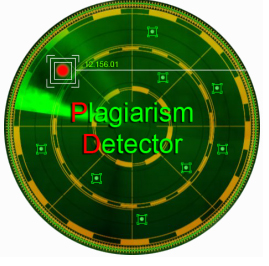LEXICAL AMBIGUITY AS A SOURCE OF HUMOUR IN DAD SAYS JOKES POSTS
Abstract
This study explores the linguistic phenomenon of ambiguity, recognising its dual nature in communication. Despite its tendency to cause confusion, ambiguity serves as a source of humour in particular contexts. This study specifically examines the role of lexical ambiguity, a subtype of ambiguity, in creating humour. The data for this study were collected from posts on the 'X' account, @Dadsaysjokes, spanning from October 2023 to January 2024. The study applied a qualitative methodology and aimed to identify lexically ambiguous words in the posts and examine the humour they create, drawing on Kreidler's theory of ambiguity and Krikmann's theory of humour. The analysis revealed that 10 posts incorporated lexically ambiguous words, highlighting their prevalence in creating verbal humour. This study has contributed to the mechanisms of humour production, highlighting the interplay between lexical ambiguity, incongruity, and humorous effect. Furthermore, it underscores the importance of considering ambiguity not only as a potential obstacle to effective communication but also as a valuable source of humour production and entertainment.
Keywords: incongruity, lexical ambiguity, verbal humour
Full Text:
PDFReferences
Attardo, S. (2011). Humour. In J. Zienkowski, J. Ostman, & J. Verschueren (Eds.), Discursive Pragmatics (pp. 135-155). John Benjamins Publishing Company.
Attardo, S. (2020). The Linguistics of Humour: An Introduction. Oxford University Press.
Bucaria, C. (2004). Lexical and Syntactic Ambiguity as a Source of Humour: The Case of Newspaper Headlines (postgraduate thesis). Youngstown State University, Ohio.
Chang, C. S., & Mutty B. (2022). Lexical And Syntactic Ambiguity in The Vaccine News Headlines of The Star. International Journal of Education, Psychology and Counseling, 7(47), 228-246.
Chinelo, J. E., & Macpherson, N. A. (2015). A Stylistic Exploration of Lexical Ambiguity in Newspaper Headlines. Humanity & Social Sciences Journal, 10(2), 63-72.
Demir, C. (2020). Lexical and Structural Ambiguities in Student Writing: An Assessment and Evaluation of Results. African Educational Research Journal, 8(3), 100-108.
Jannah, N. (2021). Lexical and Syntactic Ambiguity in The Business News of BBC News (undergraduate thesis). Universitas Islam Negeri Maulana Malik Ibrahim.
Kreidler, C. W. (1998). Introducing English Semantics. Routledge.
Krikmann, A. (2006). Contemporary Linguistic Theories of Humour. Folklore, Electronic Journal of Folklore, 33. Folk Belief and Media Group of Estonian Literary Museum, Tartu.
Makroum, R. A. A. (2021). Lexical Ambiguity and Verbal Humour in Some English Jokes and Riddles. Scientific Journal of Faculty of Arts, 10(3), 81-106.
Nwala, A., & Umukoro, B. (2017). Investigating the Meaning of Newspaper Headlines: The Issue of Ambiguity. African Research Review: An International Multi-Disciplinary Journal, 11(3), 87-96.
DOI: https://doi.org/10.33365/llj.v5i1.5188
Refbacks
- There are currently no refbacks.
Linguistics and Literature Journal
Published by Universitas Teknokrat Indonesia
Organized by Faculty of Arts and Education
Jl. Zainal Abidin Pagaralam, No.9-11, Labuhanratu, Bandarlampung, Indonesia
Telepon : 0721 70 20 22
W : http://jim.teknokrat.ac.id/index.php/linguistics_and_literature/index










